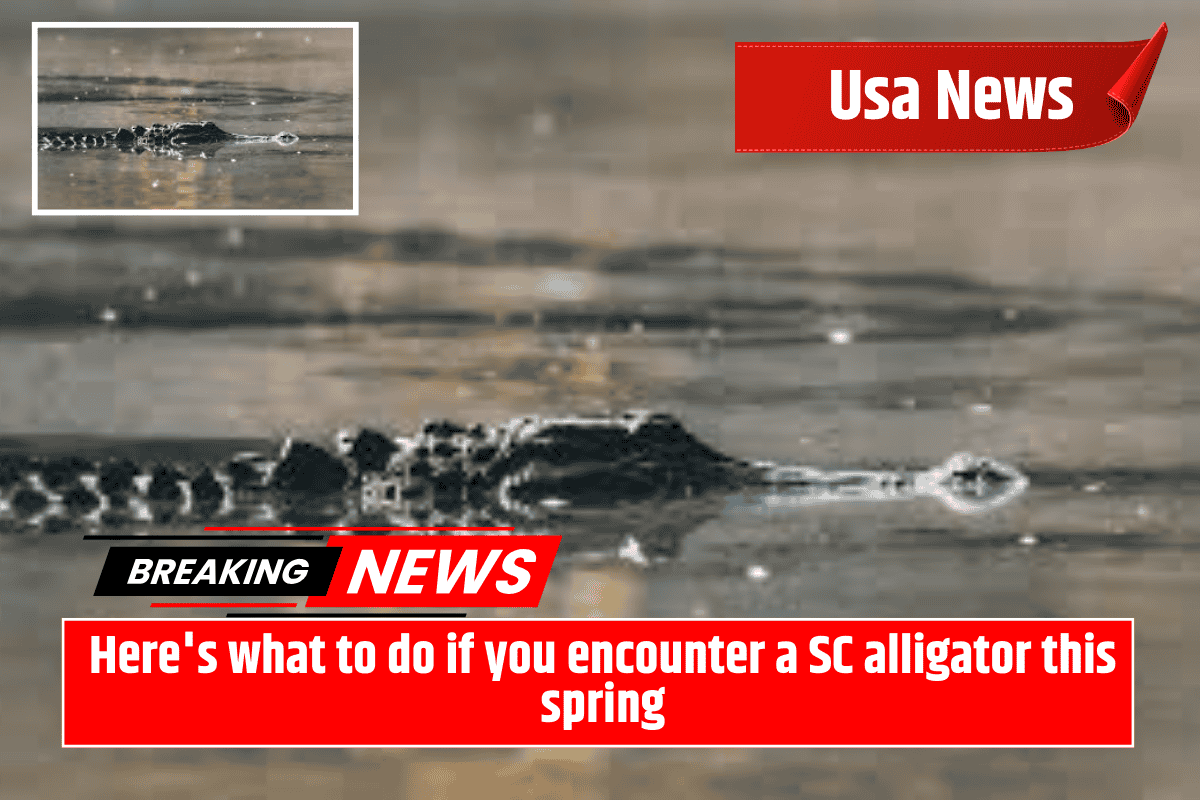In South Carolina’s Lowcountry, spotting an alligator in your backyard, on the golf course, or even during a quiet walk isn’t out of the ordinary. These ancient reptiles, often compared to miniature dinosaurs, are a natural part of the region’s ecosystem. But while sightings are common, knowing how to handle such encounters safely is important—especially as alligator activity increases during mating season.
Here’s a simple guide to understanding alligator behavior and what you can do to stay safe.
Why Are Alligators More Active in Spring?
April marks the start of alligator mating season, according to the South Carolina Department of Natural Resources (SCDNR). This is when both adult and young alligators begin moving around more often, looking for mates or new territories.
Alligators typically reach sexual maturity when they grow between 6 and 8 feet long. Courtship begins in early April, and breeding peaks between late May and early June. Because of this, it’s more likely to see alligators out and about during these months.
What’s a Safe Distance From an Alligator?
Even if you don’t see one, it’s smart to stay at least 10 feet away from the edge of any natural body of water during spring and summer. Alligators blend well with their surroundings and can be hard to notice until you’re too close.
If you do spot one, don’t approach it. Alligators are generally shy but can become defensive if they feel threatened or cornered.
What to Do If an Alligator Comes Toward You
Although alligators spend most of their time in water, they may travel over land to find food, mates, or new habitats. If you ever find an alligator walking toward you, follow these steps:
Stay calm and do not provoke the animal.
Slowly back away.
Move to higher ground.
Make loud noises to scare it off.
If you are alone, stay alert, continue backing away, and use your voice or any object nearby to make noise. These actions usually help to push the alligator away, as they are not naturally aggressive toward humans.
How Dangerous Are Alligators to Humans?
Most alligator attacks are rare and usually non-fatal, according to SCDNR. But serious injuries are more likely if the alligator is over 8 feet long or feels trapped. While unprovoked attacks do happen, they are not common.
The most dangerous situations involve people getting too close to alligators, especially near water or during their breeding season.
What to Do If an Attack Happens
If you or someone else is attacked:
Try to grab the alligator and roll with it to avoid tearing injuries.
Strike its nose hard and repeatedly.
If possible, try to gouge its eyes.
Do everything you can to avoid being pulled into the water.
If you witness an attack, strike the alligator in the same areas to help the victim. Call 911 immediately and report the situation to SCDNR.
To report a nuisance alligator in Beaufort County, you can contact SCDNR at (803) 625-3569.
Do Alligators Hunt on Land?
No, alligators are ambush predators. They prefer to stay hidden in water and wait quietly for prey. On land, they are usually basking in the sun and don’t feel as secure. That’s why they might behave more defensively when approached on land.
Alligators don’t normally chase humans. If one moves toward you, it’s likely because you are too close, or you’re between it and the water. In those moments, they may hiss, open their mouths, or lunge a short distance to scare you away.
Important Safety Tips Around Alligators
Never feed alligators. It’s illegal and dangerous. Feeding them causes them to lose their fear of humans.
Don’t throw fish parts or food into the water.
Keep kids and pets away from water’s edge.
Always keep pets on a leash if walking near ponds or marshes.
Avoid swimming in natural water bodies during mating season. Swim only in designated areas and during daylight.
Why Alligators Matter to Nature
Despite how frightening they may look, alligators play an important role in the ecosystem. They help control other animal populations and support wetland health. Some species today are closely related to prehistoric reptiles, making them a living connection to the past.









